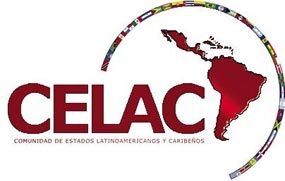Havana and Washington will hold next week a second round of negotiations aimed at ending the severance of their diplomatic ties determined by the northern country in 1961, prior to the implementation of economic, commercial and financial blockade that has surpassed the five decades.
The beginning of the new environment was marked by the presidents of Cuba, Raul Castro, and the United States, Barack Obama, when last December 17 they announced the decision of both sides to initiate a process towards the resumption of diplomatic ties and its subsequent normalization.
In this regard, the Cuban president said a month ago at the Third Summit of CELAC, held in Costa Rica, that the restoration of these relations “implies to adopt mutual measures to improve the climate between the two countries, to resolve other outstanding problems and to advance in cooperation.”
He added that the current situation provides an opportunity to the hemisphere to find new and higher forms of cooperation suitable for “the two Americas” and would solve pressing problems and break new ground.
Raul Castro stressed that the Proclamation of Latin America and the Caribbean as a Zone of Peace, adopted at the Second Summit of CELAC (Havana, January 2014), is an “indispensable platform for it.”
Within this concept, he included the recognition that every State has the inalienable right to choose its political, economic, social and cultural systems, without interference in any form by another State, as an inalienable principle of international law.
The proclamation of CELAC established the preservation of peace as a substantial element of the integration of Latin America and the Caribbean and a principle and common value of that community, and strengthened the vision of a just international order, stated in the law and in a culture of peace that excludes the use of force and non-legitimate means of defense, including weapons of mass destruction, particularly the nuclear ones.
The text adopted in Havana reaffirmed the longstanding commitment to the peaceful settlement of disputes in order to banish forever the use and threat of using force in the region and ratified the principles of national sovereignty, equal rights and self-determination of peoples.
It was also reaffirmed the need to promote friendship and cooperation relations among themselves and with other nations, regardless of the differences in their political, economic and social systems or their levels of development, and to practice tolerance and live together in peace as good neighbors.
In his speech to the Summit of Costa Rica, Cuban President reiterated that “Cuba and the United States must learn the art of civilized coexistence based on respect for the differences between the two governments and cooperation on issues of common interest, which contributes to solve the challenges facing the hemisphere and the world.”
And he pointed out that “no one should pretend that, for that purpose, Cuba have to give up their ideals of independence and social justice, neither falter in one of our principles, nor give an inch in defense of national sovereignty”.
Latin America was the first region in the world to establish, through the Treaty of Tlatelolco, a zone free of nuclear weapons, and that event now advances to its statement as a Zone of Peace, which also reaffirms its link with development as aspects which are interdependent and inseparable.
The proclamation of the CELAC was greeted by the independent expert of the United Nations for the promotion of a democratic and equitable international order, Alfred de Zayas, who considered it as a clear example to the world and stressed the emphasis given to the universal disarmament by the text.
The decision of the regional mechanism “was based on the legitimate desire of all peoples to preserve and consolidate peace by promoting friendly relations among States and commitment of all countries to resolve any dispute peacefully,” he said in an interview with Prensa Latina.
For UN expert, the establishment of zones of peace and cooperation in a growing number of regions in the world entails the commitment of governments to a significant reduction in military budgets and expenditures.
It is a vision that excludes the use of force and non-legitimate means of defense, including weapons of mass destruction, and it involves working and negotiating to achieve a complete nuclear disarmament and a marked reduction of conventional weapons and their trade, he said.
The document adopted in Havana is an auspicious sign for the advancement of an international order that should be more democratic and equitable, based on the principles of sovereignty and international solidarity, he said.
During the meeting in Havana, Raul Castro stressed that “there can be no peace without development, no development without peace.”
“That’s why we intend to proclaim our region as a Zone of Peace to banish war, threat and use of force forever, in which disputes between our countries are resolved by ourselves, by peaceful means and negotiation, according to the principles of international law,” he said.
Beyond the restoration of relations between Cuba and the United States, there will still be some way to go for Washington to remove Cuba from the list of countries sponsoring terrorism, to return the territory illegally occupied by the Guantanamo Naval Base, to retire the anti-Cuban radio and television broadcasts, to agree on fair compensation to Cubans for human and economic damage suffered, and to lift the blockade on Cuba.
These are actions that will strengthen the regional efforts towards a Zone of Peace.



